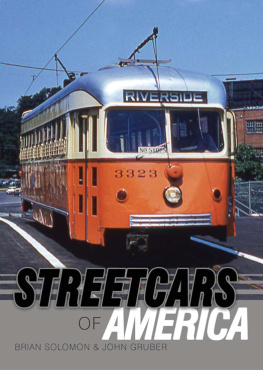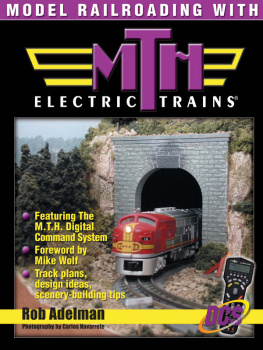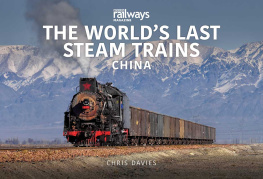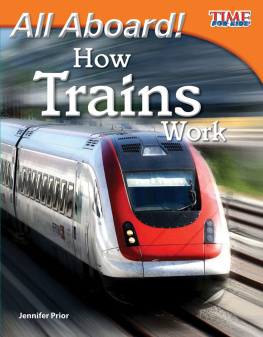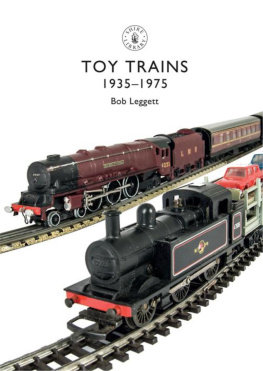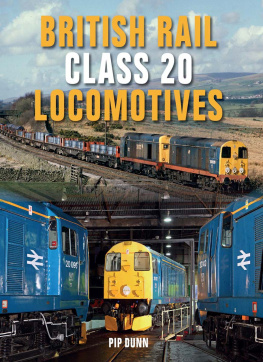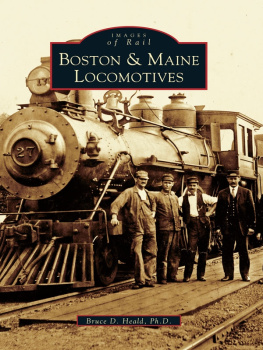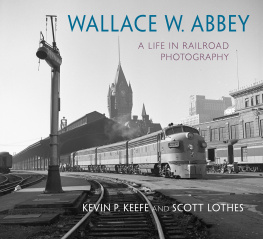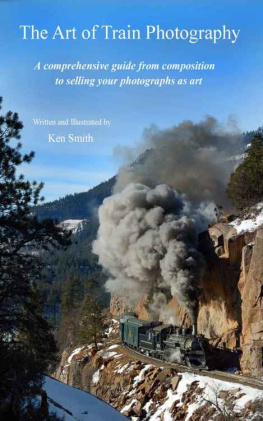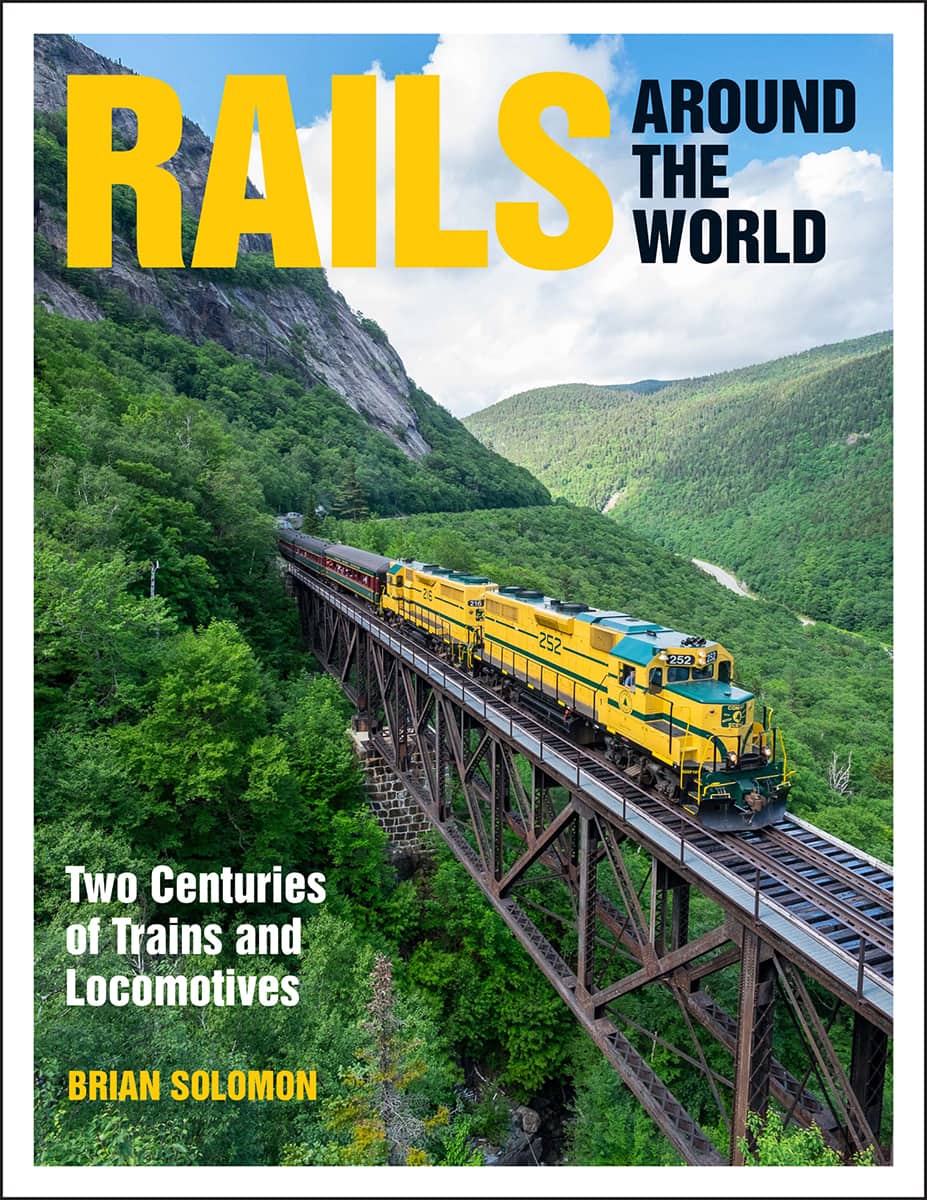Contents
Guide
RAILS
AROUND THE WORLD
Two Centuries of Trains and Locomotives
BRIAN SOLOMON

Introduction
I n this book, I make historical examinations of a select group of significant locomotives and self-propelled trains. These were chosen for a variety of reasons, including novel design, significant or exceptional performance or longevity, wide geographic territory and technological influence, or milestone status. These locomotives include those that operated on countless railways around the world and are among those that changed railroading. Some types will be universal, such as the 4-4-0 American-type steam locomotive, which was the dominant North American locomotive in the nineteenth century and was built in large numbers for railways around the world. Others are more obscure, yet still remarkable and significant, and represent part of the greater story of world railways. In terms of numbers, Irelands 121 class locomotives may seem almost insignificant, yet the type represents the first export of a General Motors diesel-electric model from its LaGrange, Illinois, factory to western Europe, and demonstrates the superiority of mid-twentieth-century American diesel technology over that of many traditional locomotive European manufacturers. For Ireland it was the most significant locomotive of the twentieth century.
Throughout the book, I have connected sections with common threads. I hope the largely chronological organization will help the reader recognize the significance of various locomotives and how they influenced subsequent development around the world. In the nineteenth century, American and British builders helped establish technological precedents for railway propulsion everywhere. Although it doesnt get its own section, Britains famous Rocket of 1829, built by Robert Stephenson, was unquestionably the most significant engine of all time. It set the pattern for most of the reciprocating steam locomotives built for mainline use by establishing the three basic design principles of a multi-tubular, fire-tube-type boiler; forced draft from cylinder exhaust; and the direct connection between the cylinders and driving wheels. This proved vastly superior to all previous locomotive designs and represented the granddaddy of world locomotive design until the advent of electric and later diesel motive power.
Ive looked beyond the machinery to discuss the designers themselves, the hurdles they faced, and their ingenious solutions. Ive tried to sample a wide range of types: steam, diesel and electric, passenger engines and freight, large locomotives and smaller ones too. My selection is intended to include railway locomotives used by many railways around the world, but it is not intended to be comprehensive. Rather than a mere listing of significant types, I wanted to tell the story of a select group of interesting and significant machines. There are many superlative locomotives that are not featured here but could have been. Perhaps those engines will be prominently featured in a future volume.
Operator controls for a high-speed German diesel-electric railcar like those assigned to Flying Hamburger services. Hundert Jahre Deutsche Eisenbahnen, Solomon collection
American 4-4-0
T he American type, defined by its 4-4-0 wheel arrangement, was the dominant locomotive on mid-nineteenth-century North American railroads and one of the most enduring icons of American railroading. The wheel arrangement was introduced in 1836 by Philadelphia locomotive manufacturer Henry R. Campbell, who patented and constructed the first known 4-4-0 locomotive for the Philadelphia, Germantown & Norristown. A year later, builders Eastwick and Harrison significantly improved the type by introducing an equalization lever that provided the engine a three-point suspension. This suspension in combination with four driving wheels and a four-wheel leading truck made the 4-4-0 arrangement ideally suited for Americas lightly built track structure. The American type was widely built from 1850 until the 1880s, after which new wheel arrangements facilitated larger locomotives, usurping the Americans dominance. Yet many railroads continued to order new and larger 4-4-0s into the twentieth century. Despite obsolescence, some examples survived until the end of steam in the United States in the late 1950s and in Canada into the early 1960s.
The best remembered were the elaborately decorated and colorfully painted Victorian gems, dating from the early decades of commercial railroading, when most railroad locomotives were wood burners. Elaborate smokestack designs were employed to minimize damage from wood sparks, including conical balloon and diamond-shaped stacks, prominent characteristics of many mid-nineteenth-century engines. After the American Civil War, railroads gradually shifted to coal. Coal offered higher burn value and enabled construction of ever more powerful engines while increasing the production of the locomotive fireman, but coal soot was dirty. The coal era contributed to the end of the colorfully ornamental era for American engines and introduced more austere appearances, as many American railroads began painting their locomotives black.
Nevadas Virginia & Truckee No. 12 was built by Baldwin in 1873 and has been restored to its early 1900 appearance for display at the California State Railroad Museum in Sacramento. Brian Solomon
Matthias Forney featured this classic American in his book Catechism of the Locomotive, published in 1873 at a time when the 4-4-0 was the dominant locomotive in North America. This Rogers-built engine features the Wagon top style of boiler known for its tapered profile. Catechism of the Locomotive, Solomon collection
Wood-burning locomotives required elaborate smokestacks with screens and other spark arrestors to minimize the likelihood of line-side fires. A young girl observes this Plant System 4-4-0 simmering with a short passenger train. The late-nineteenth-century Plant System was a Georgia-based component of the Atlantic Coast Line. Solomon collection
The 4-4-0 was prized for its versatility, and certainly in the early years, many engines were built for general service. However, as railroads began operating heavier freights and faster passenger trains, more customized locomotive designs prevailed. Engines with taller drive wheels were designed for speed, while shorter drive wheels were better suited for starting and moving heavy freights. During the Americans predominant period, the average size of engines with this wheel arrangement grew enormously. Where the early 4-4-0s weighed typically 12 to 15 tons, by the late nineteenth century, coal-burning 4-4-0s weighed between 40 and 45 tons, dwarfing the tiny wood-burners of the early period.


